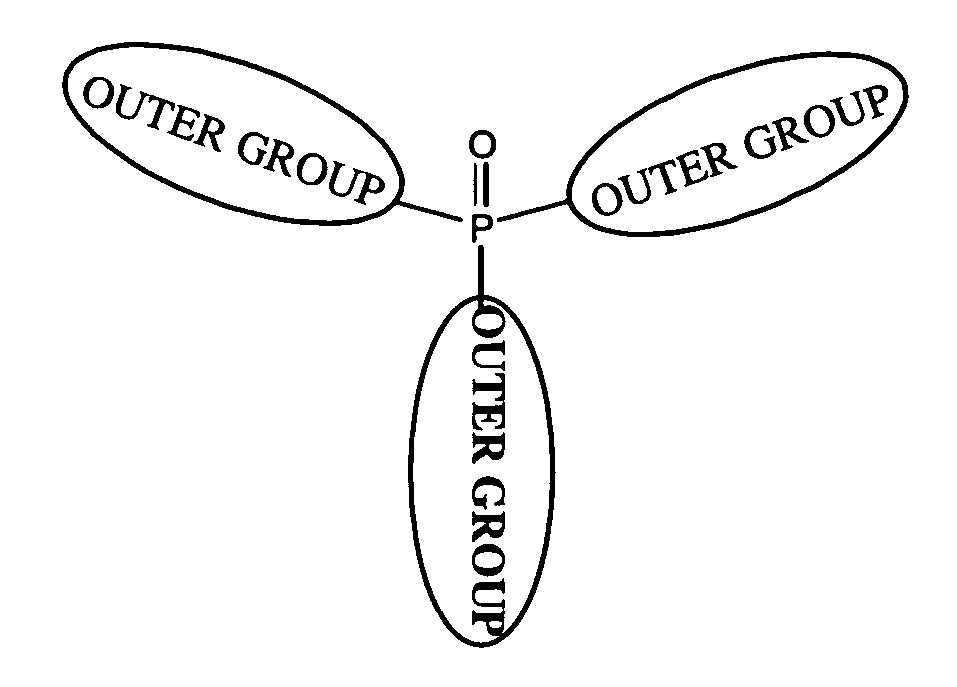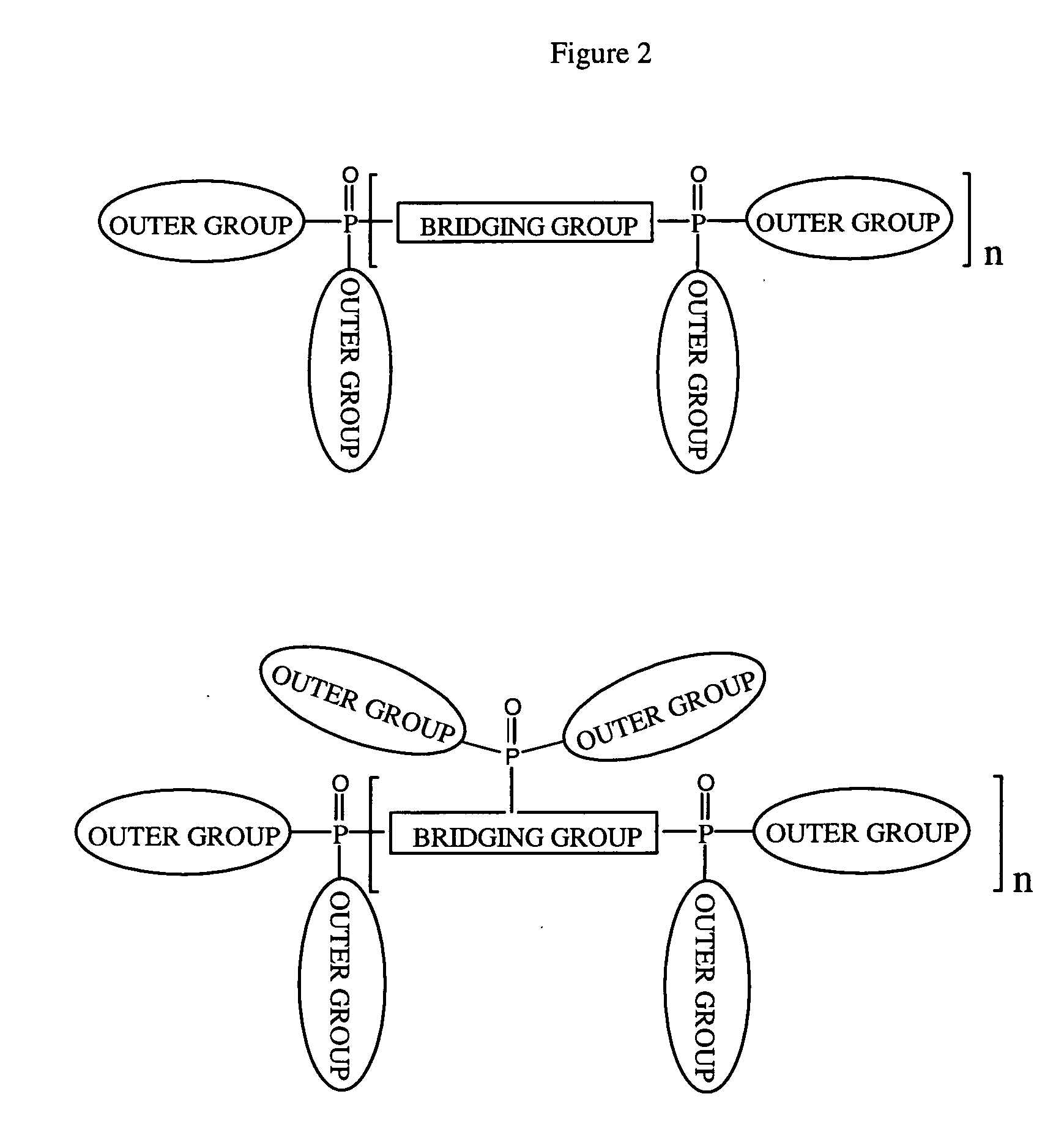Organic materials with tunable electric and electroluminescent properties
a technology of electroluminescent properties and organic materials, applied in the direction of organic semiconductor devices, non-metal conductors, conductors, etc., to achieve the effect of generating a minimum amount of waste, efficient and effective separation, and simplifying the process
- Summary
- Abstract
- Description
- Claims
- Application Information
AI Technical Summary
Benefits of technology
Problems solved by technology
Method used
Image
Examples
Embodiment Construction
[0026] The following experiment demonstrated how one preferred embodiment of the present invention was successfully utilized as the active component of an electronic device. Specifically, the photoluminescent and electroluminescent properties of 4,4′-bis(diphenylphosphine oxide)biphenyl (hereafter PO1) demonstrated how the phosphine oxide moieties of the present invention restrict electron conjugation and provide a wide optical gap, electron transporting material. These properties of this new material provide superior performance to the more widely studied diamine analogue which is hole transporting and exhibits a smaller optical gap.
[0027] PO1 was obtained by oxidation of 4,4′-bis(diphenylphosphine)biphenyl (P1). The synthesis was performed as follows. All chemicals were obtained from Aldrich Chemical Co. and used as received unless noted otherwise. THF was distilled from Na metal / benzophenone. All glassware was thoroughly dried prior to use. 4,4′-bis(diphenylphosphine)biphenyl (P...
PUM
 Login to View More
Login to View More Abstract
Description
Claims
Application Information
 Login to View More
Login to View More - R&D
- Intellectual Property
- Life Sciences
- Materials
- Tech Scout
- Unparalleled Data Quality
- Higher Quality Content
- 60% Fewer Hallucinations
Browse by: Latest US Patents, China's latest patents, Technical Efficacy Thesaurus, Application Domain, Technology Topic, Popular Technical Reports.
© 2025 PatSnap. All rights reserved.Legal|Privacy policy|Modern Slavery Act Transparency Statement|Sitemap|About US| Contact US: help@patsnap.com



